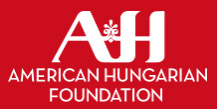Fraternity-Testvériség, 1975 (53. évfolyam, 1-12. szám)
1975-07-01 / 7-9. szám
trying to recreate Kovats’ picture, for both of them came from the same Hungarian Plains and were excellent horsemen. He devoted a large brass plaque, a small rider’s statue, and a few other plaques to him. It is questionable, however, that Finta’s typically Hungarian face was similar to Kovats! The same is true of Aurel Rasko’s artistic painting portraying a remarkably handsome, black-haired officer in parade uniform with a big moustache. The American artist George Gray depicted on a large canvas the moment when the Mother Superior of the “Single Sisters”, a Protestant deaconess order in Bethlehem, Pa., presents the flag of the Legion to Pulaski. The officer in the group around Pulaski, who has to be our hero for other reasons also, shows remarkable similarity with the features and uniform of Rasko’s Kovats portrait. In Hungary, General Tivadar Galanthay-Glock, historical painter and professor of the Ludovica Military Academy in Budapest, painted the Hussar attack at Charleston, but we do not know the present whereabout of the painting. Our renowned contemporary, Mr. Zoltán Bényey, has prepared a large- scale composition on the canvas about the death ride of Kovats for the American Bicentennial year. The young and conceited Michael Kovats, who leaves the bleak life of the Hungarian Plains at an age of twenty searching for military glory, seeks only a more adventurous life and the battle for its own sake. His years spent in the Prussian Army will have to train this talented and spectacularly brave young man to become one of the best trained Hussar officers of all of Europe. Yet the innumerable orders and appreciation letters from the two absolutistic rulers fail to satisfy him. At the sunset of his life he finds finally the idea in the service for which, after offering his sword, he will sacrifice his life. In this sense, the Hungarian hussar officer falling at Charleston, S. C. has become not only a liero of the American Revolution, but of human rights in general. THE ENSIGN OF MARIA THERESA When Kovats reached military draft age, Europe found itself in wars about continental supremacy. The First and Second Silesian Wars were followed by tbe War of the Austrian Succession. Frederick the Great, King of Prussia, tried to unite the German principalities under Prussian leadership and then achieve hegemony in Europe for the reorganized “Holy Roman Empire German Nation.” The creation and training of an army necessary to attain such tremendous goals was started already under his father, Frederick William I, who was nicknamed the “Soldier King” in the European Courts because of his almost obsessive activities to build a powerful army. The German danger was demonstrated for the first time in modem history in 1740 when the excellently organized Prussian war machine was led by Frederick the Great, one of the most talented generals of his time. The Vienna Court had realized, correctly, that the danger from the north against the Habsburgs could be stopped only by uniting all available military force. Therefore, the Court’s most important task was the winning over and mobilization of the Hungarian nobility which had been relegated into the background since the Rákóczi uprising. At the suggestion of her adviser, and also led by a woman’s intuition, the young queen, Maria Theresa, dressed in gala Hungarian dress with the heir apparent, the later Joseph II, in her arms appeared at the Diet of Pozsony, the present Bratislava. In an eloquent speech, she appealed for the assistance of the Hungarian nation against the danger threatening Vienna. Vienna calculated correctly; its leaders knew precisely the Hungarian temperament. Under the impact of this dramatic scene, the noble estates immediately forgot the Peace of Szatmar forced upon them in 1711, the humiliation of their adored leader, Francis Rákoczy, and forgave the Habsburgs the long series of illegal acts against them for more than a century. As one man, they rose unsheathing their sabres and shouted: “Our lives and blood for our queen, Maria Theresa.” Once again at a historical moment, the fate of the nation was decided not by common sense, but by artificially aroused emotions. The enthusiasm of the Diet was soon echoed in the land. As mushrooms growing after a rain, newer and newer Hungarian regiments were organized under the standards of the queen. Among these was the Jasz-Cumanian Hussar regiment which would gain much renown later. The regiment received its recruits from among the people of the Cumanian Plains and Michael Kovats became a hussar with this regiment in 1744. He fought honorably in the Second Silesian War. We have data that his regiment fought in the battle of Kesseldorf on December 15, 1745, which was lost by the Austrians. In March, 1746, his regiment was withdrawn from Saxony and dissolved, as were several other Hungarian units. After the Silesian War, the Vienna Court regarded the question of succession as solved and did not want to see well-trained and well-armed Hungarian regiments in existence. The smaller units of the regiment were assigned to the division commanded by Count Stephen Grassalkovich, but on a record which was sent by Palatine Count Louis Batthányi to Count Leopold 21
